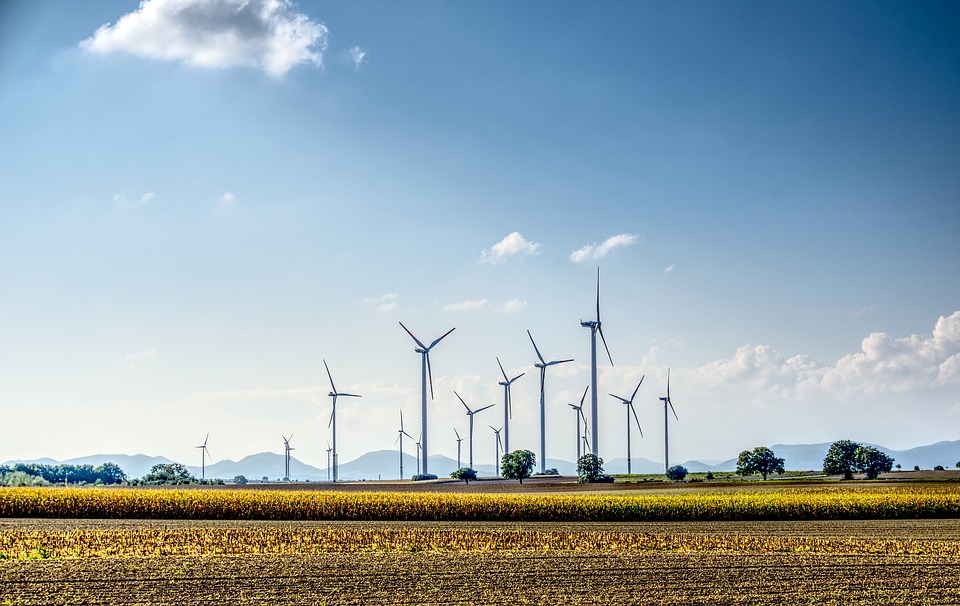The increasing capacity of renewables brings not only benefits, but also challenges that need to be handled by the grid operator. Poland wants to give it the right tools to act.
The world is investing more and more in renewable energy sources, especially photovoltaics and wind farms, so problems are arising with integrating these sources into the power system. „The recent problems with taking in excess production from renewable energy sources, which are beginning to occur in Poland and other countries where the installed capacity of renewable energy sources is growing, raise the questions: what next? Does it make sense to invest billions in building new RES installations when the system is already unable to accommodate their output? How to meet the energy policy goals of targeting a RES share of 32 percent of electricity production in 2030, when currently with production of little more than 20 percent, grid operators have to shut down renewable energy sources. In Poland, in April 2023 alone, grid operators were forced to reduce generation by renewable sources twice,” Professor Władysław Mielczarski pointed out in a commentary for BiznesAlert.pl.
On April 23, 2023, PSE (grid operator in Poland – ed.) announced Poland’s energy supply security was at risk. It had to limit renewable energy sources with PV on top of the list due to great supply and little demand. All in an effort to stabilize a system that could not cope with the growing amount of RES.
Professor Mielczarski assessed that the discussion that developed in the media after the forced RES switch offs boiled down to pointing out simple but ineffective solutions. „They mainly called for the development of the electricity grid, the construction of energy storage facilities, and the wider use of Demand Side Management. All of these pieces of advice are simple, because they stem from a simplistic perception of the principles of power systems or a complete lack of knowledge about the principles of the electric power industry,” he wrote.
„An electric power grid is a system of transmission lines, distribution lines, transformers, current and voltage transformers and appropriate protection. The grid can transmit electricity but is unable to store it. Its development will come down to the transmission of excess energy from one place to another, where this excess also exists. Significant reductions in electricity transmission losses cannot be expected. Energy losses in the high-voltage transmission system are 2.3 percent of the total energy transmitted, and in distribution systems they are generally 6-8 percent. To put it more simply: the power grid is just „wires,” and transformers are also „wires” only in oil, and you can’t expect much from them. Nor will „hugging” power poles help much, as the well-known weekly The Economist advises,” explains Vladislav Mielczarski.
In his opinion, the energy storage facilities that Poland may acquire are not the answer to the excess energy from renewable sources. „Electricity cannot be stored directly, because it is the movement of electrons, and movement cannot be stored. There are chemical or mechanical storage facilities, but these are small capacity and short-lived, and large-scale storage facilities with a capacity of tens of TWh, which would be able to store energy over a period of several months, are needed to store RES energy. Such storage facilities do not exist and are unlikely to exist, because hopes for large-scale hydrogen storage in a situation where we have been able to build natural gas storage facilities with a capacity of only 15 percent of total demand is just wishful thinking. Trials with DSR have indicated possibilities in the range of 1GW and, on top of that, very expensive,” Professor Mielczarski explained.
Deputy Minister of Climate and Environment Anna Lukaszewska-Trzeciakowska stressed that new RES entering the system must be controllable. „The operators must be able to respond to the situation. Thanks to updates to the energy law PSE will be able to pay out damages to volunteers when it will be forced to limit the generation. On top of that, apart from auctions, it will also be possible to pay out money for pre-arranged shut downs of dispatchable power generation sources. Therefore, these actions may become a pre-planned part of a business,” she told BiznesAlert.pl.
However, according to Wladyslaw Mielczarski, the primary source of problems in the relationship between energy policy and the power system is the inadequate establishment of RES targets. „They reflect the amount of energy that should be injected into the power system. However, the physical characteristics of the operation of the electric power industry mean that in order for electricity to be produced, the system must take in sufficient power, and this power must not exceed the capacity of the power system that is taking it in. In theory, excess energy could be stored, but in the absence of storage, the only option left is to shut down RES installations, resulting in a waste of resources,” he wrote.
Production record = no big news
Aleksander Tretyn, editor of BiznesAlert.pl from the „With Energy About the Law” Association, pointed out that the new records of photovoltaic energy production should no longer be a sensation. „The number of new installations is increasing month by month and so is their power output, as is the amount of energy coming from these installations. We should also get used to a reduction in renewable energy production during the spring and summer months. On another Sunday in April in a row, the operator reduced energy production from photovoltaic farms,” he stressed.
„After the introduction of dynamic tariffs, energy consumers will be able to use energy at a lower cost at times when there is a lot of cheap renewable energy, planning, for example, to charge an electric car, set up laundry or do the dishes. Contrasting it with the Sunday situation, if dynamic tariffs were in place, consumers would have a much lower energy price in the afternoon around the highest renewable energy production time. In the balancing market, the price of electricity on April 30 between 11 am and 4 pm was around PLN 22/MW. It was low. However, it should be noted that during the aforementioned hours PSE also reduced production. If dynamic tariffs were in place, production curtailment might not be necessary, as consumers, bearing in mind that they can make savings by performing certain activities at the peak of photovoltaic and wind power production – would be happy to do the aforementioned laundry, electric car charging, or dishwashing in exchange for a reduction in costs, responding to the market opportunity,” the expert explained.
Tretyn pointed out that the dynamic tariff model was already operating in many countries. „Scandinavian countries, Germany, Portugal have it, and it is doing well. Consumers in countries where the model is in place are learning new habits through which they can achieve savings and help balance the national electricity system,” he wrote. He added that the introduction of the dynamic tariff system alone will not affect the balancing of the electricity system overnight. „In order for everything to function properly, there also needs to be an educational component to the new solutions so that as many people as possible can benefit from them, while also increasing the flexibility of the electricity system,” he wrote in the article.
Finns also faced a challenge, where the market price for power in Finland on May 17 was 0.3 cents per kilowatt hour. The operator Fingrid had to reduce the output of the Olkiluoto Power Plant’s reactor three, commissioned in April after a 14-year delay, due to an oversupply from renewable sources that threatened negative prices and producer subsidies.
It is worth mentioning energy prices on the Epex Spot SE exchange in Amsterdam. These were negative at -739.96 euros per megawatt hour between one and two o’clock in the afternoon of April 18. Mainly due to renewable sources, the supply exceeded demand so much that power grids could not cope with it. The intermittent operation of RES makes it difficult to plan the operation of the power system. Negative prices tend to occur during periods of lower demand like public holidays and days off with high winds or sunshine giving more energy from renewables. Operator Tennet has issued a warning calling on producers to reduce capacity.
Professor Mielczarski stressed that situations in which the power system was unable to accommodate renewable energy would become more frequent. „There are currently no technical ways to decrease the power introduced by RES into the power system other than shutting down installations, which leads to a significant waste of invested funds and subsidies. Instead of more „My Electricity 4.0″ or 5.0 programs, we need to consider introducing regulations in which all RES producers will be responsible for physically balancing their production by guaranteeing themselves adequate power reserves. For this, it is enough to implement the European Commission’s 2019 regulation (2019/943), which in Article 5 requires the physical self-balancing of RES installations with a capacity greater than 200kW,” the professor explained.
Compiled by Jędrzej Stachura









